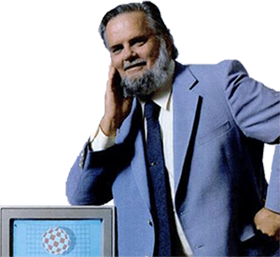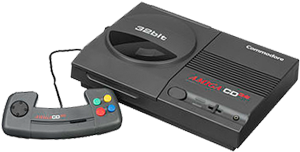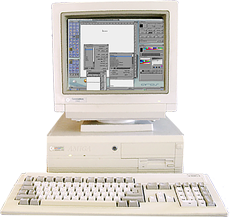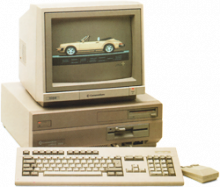Amiga – The Multimedia Powerhouse of the 1980s

The Amiga was a groundbreaking line of home and professional computers developed by Commodore between 1985 and 1994. Based on the Motorola 68K architecture, Amiga systems introduced a host of innovative features far ahead of their time, including:
- 4,096 on-screen colors
- Hardware-accelerated graphics
- Stereo PCM audio
- Preemptive multitasking
- A mouse-driven graphical user interface
These capabilities made the Amiga the first affordable multimedia computer, long before the term “multimedia” became mainstream. It quickly became the go-to platform for graphic designers, digital artists, animators, musicians, DJs, and video editors—many of whom launched their careers on an Amiga. That said, its most popular application was undoubtedly video gaming.
The Amazing Amiga CD32 Console

Released in Europe in September 1993, the Amiga CD32 was a 32-bit video game console built on the architecture of Commodore's A1200 computer. Although initially launched in Europe, it was also sold in Canada, Australia, and Brazil.
The CD32 enjoyed a strong start in Europe, quickly capturing a 50% share of the UK’s CD-ROM-based console market. However, Commodore’s expansion into the US was halted when 30,000 CD32 units were seized in the Philippines due to a patent dispute. This legal setback had a serious impact on the company’s already fragile financial state. As a result, the console was discontinued in April 1994.
- It is estimated that only 200,000 units of the CD32 were ever produced
Amiga 3000 — The Dream Machine of the Early ’90s

Released in 1990, the Commodore Amiga 3000 was a high-end, 32-bit business-class computer, powered by the Motorola 68030 CPU and 68882 math co-processor. Featuring the Enhanced Chip Set (ECS), AmigaOS 2.0, and a built-in VGA display enhancer, the A3000 represented the pinnacle of the Amiga line before the arrival of the AGA chipset. Fully backward-compatible with earlier Amiga systems, A3000 quickly became the dream system for dedicated users, with the notable exception that it could not run AGA software.
- Initially priced at $3,379 (roughly $7,500 in 2023 money)
- Only around 30,000 desktop units and 8,000 A3000T tower versions were ever produced, making it a relatively rare and sought-after model
"A1200 -The AGA Graphics Powerhouse"
![]()
Released in October 1992, the Amiga 1200 was a powerful multimedia computer. Priced at £399 in the UK and $599 in the US, it offered 24-bit AGA graphics, a 32-bit architecture, and the new AmigaOS 3.0/3.1 to the mainstream. It was one of the most advanced home computers of its time and remains a favorite among retro computing enthusiasts.
"Alien Technology Near Your Neighbor"

Released in April 1987, the Amiga 500 is a legendary multimedia home computer manufactured by Commodore until 1992. The A500 offered the same CPU and chipset as the original Amiga 1000, but at a considerably lower price.
- Initially sold for $699 ($1,780 in today’s money)
- A500 was the most successful Amiga model ever sold (especially successful in Europe)
- The Amiga series of computers was used by artists all over the world
A4000 -The Holy Grail of Amiga Computing

Released in October 1992 by Commodore, the Amiga 4000 (A4000) represents the pinnacle of classic Amiga computing. As the most advanced and final Amiga model of its era, it combines a powerful 32-bit architecture, high-resolution AGA graphics, and a deeply expandable hardware platform. Fully compatible with earlier Amiga software, the A4000 opened new horizons for productivity, multimedia, and gaming.
Built with expansion in mind, the A4000 supports accelerators, RAM upgrades, CD-ROMs, graphics and sound cards, and even PC compatibility via 486DX co-processor boards.
- Original price: $3,700 (A4000/040) or $2,400 (A4000/030)
- Inflation-adjusted: ~$7,620 and ~$4,900 respectively
"A2000 -The Hollywood Star"

Released in March 1987, the Commodore Amiga 2000 (A2000) was a powerful and highly expandable computer designed for professionals. Based on the Motorola 68000 CPU, the A2000 featured OCS graphics, stereo PCM audio, multitasking, and a graphical user interface, making it ideal for creative, business, and technical applications.
The A2000 was discontinued in 1991, shortly after the launch of the Amiga 3000. With its open architecture and Zorro II bus, it became the platform of choice for organizations like NASA and television studios using the legendary Video Toaster video effects system.
-
Launch Price: $1,495 (equivalent to around $3,800 in 2023)














 TOP-10 APPS
TOP-10 APPS

